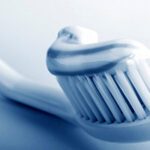A patient comes in with the chief complaint of a toothache. After a short examination including an X-ray film, tapping on the tooth, and checking the gums the dentist determines that tooth decay is deep enough inside the tooth to infect the pulp or the root canal. The patient needs root canal treatment. Hearing “infection,” the patient knows exactly what he needs – an antibiotic. In this case, the antibiotic may be more likely to cause an infection than cure.
Let’s break down the last statement. The antibiotic may not cure the infection in the tooth. An infection inside a tooth will not respond to an antibiotic because the antibiotic will not be able to get to it. Antibiotics get to the infection in the blood. When a tooth is infected, blood can not get into the tooth. The antibiotic will go everywhere else in the body, but not enter the tooth.
How is it possible that the antibiotic will be more likely to cause an infection? Every healthy person carries bacteria all over and through their body. The bacteria live in a delicate balance. Taking an antibiotic will kill off bacteria sensitive to that antibiotic leaving a vacuum or a void. Bacteria or other organisms that are not as sensitive to that antibiotic will grow unchecked and create an infection.
Candidiasis or thrush is a common opportunistic yeast infection. Yeast is not sensitive to antibiotics, so it is common for people who take antibiotics to develop a yeast infection. This can effect a small child who takes antibiotics for the flu, their mother taking an antibiotic for a sore throat that is not caused by strep bacteria, and their grandmother taking an antibiotic for a tooth ache. In each case, antibiotics do nothing to improve the outcome of the illness. In each case, the antibiotic is more likely to do harm.
Many serious infections relate to antibiotic use. Doctors at the Coté de Nacre University Hospital in Caen, France, discovered that by decreasing the use of a particular family of antibiotics, they were able to sharply reduce the number of infections with Methycillin Resistant Staph aureas (also know as MRSA or flesh eating bacteria). Taking Clindamycin may result in a painful intestingal infection with a bacterial infection, pseudomembranous colitis. Such an infection calls for treatment with another antibiotic, Metronidazole. Other side effects of antibiotics range from simple stomach aches to painful tendon rupture to death due to allergic reaction and difficulty regulating blood sugar.
Proper infection management is an important part of dental education, so why would a dentist prescribe an antibiotic when they know it is not necessary? Dentists may be under pressure from their patients in two ways. No one likes to wait for their dental appointment. Dentists know that it is faster and easier for a dentist to prescribe an antibiotic than it is to explain to the patient why they do not need an antibiotic.
The other pressure that faces dentists and other prescribers is that patients appreciate when dentists and physicians prescribe antibiotics. Last year, a team lead by C. R. Stearns of the Center for Health Equity Research and Promotion, VA Medical Center, Philadelphia, PA, found that many physicians at many hospitals prescribe antibiotics for viral chest colds only to increase patient satisfaction. This is an important factor for physicians when medical insurance companies use patient satisfaction as a pay-for-performance measure. In other words, some insurance companies pay more to physicians who please their patients.
Dental insurance does not use pay-for-performance measures to pay dentists. However, dentists have always been concerned with patient satisfaction. Time and patient expectations may have the same effect on dentists as pay-for-performance.
There are only two ways to treat an infection inside a tooth: clean the infection out of the tooth by doing root canal treatment, or removing the infected tooth. If the patient must wait, pain reliving medication is the best course of treatment. A dentist with some talent, experience, and a good assistant can start root canal treatment in less than a half hour. Usually, this will stop the pain for days or weeks until the patient and dentist have time to finish the treatment or remove the tooth.
The Centers for Disease Control in Atlanta, the Food and Drug Administration and the Department of Health and Human Services are working to educate patients and prescribers on the importance of appropriate antibiotic prescribing. Look for information on their web sites listed below.
Do you have dental pain, a cold, or the flu? Only take antibiotics if they are absolutely necessary for a bacterial infection. The treatment can be worse than the disease. Whenever a healthcare provider offers a prescription for antibiotics, it is alright to ask why you need it.



